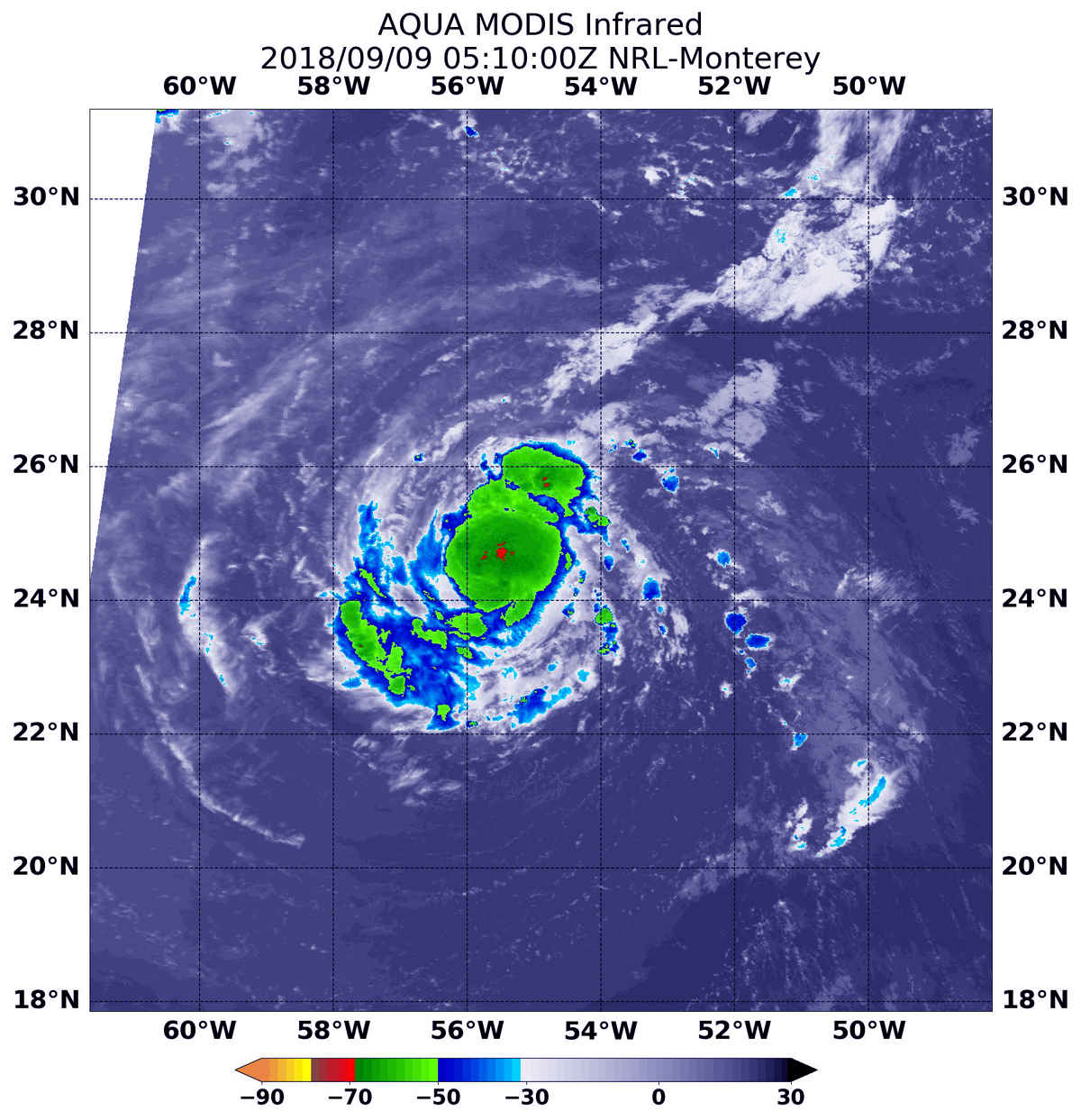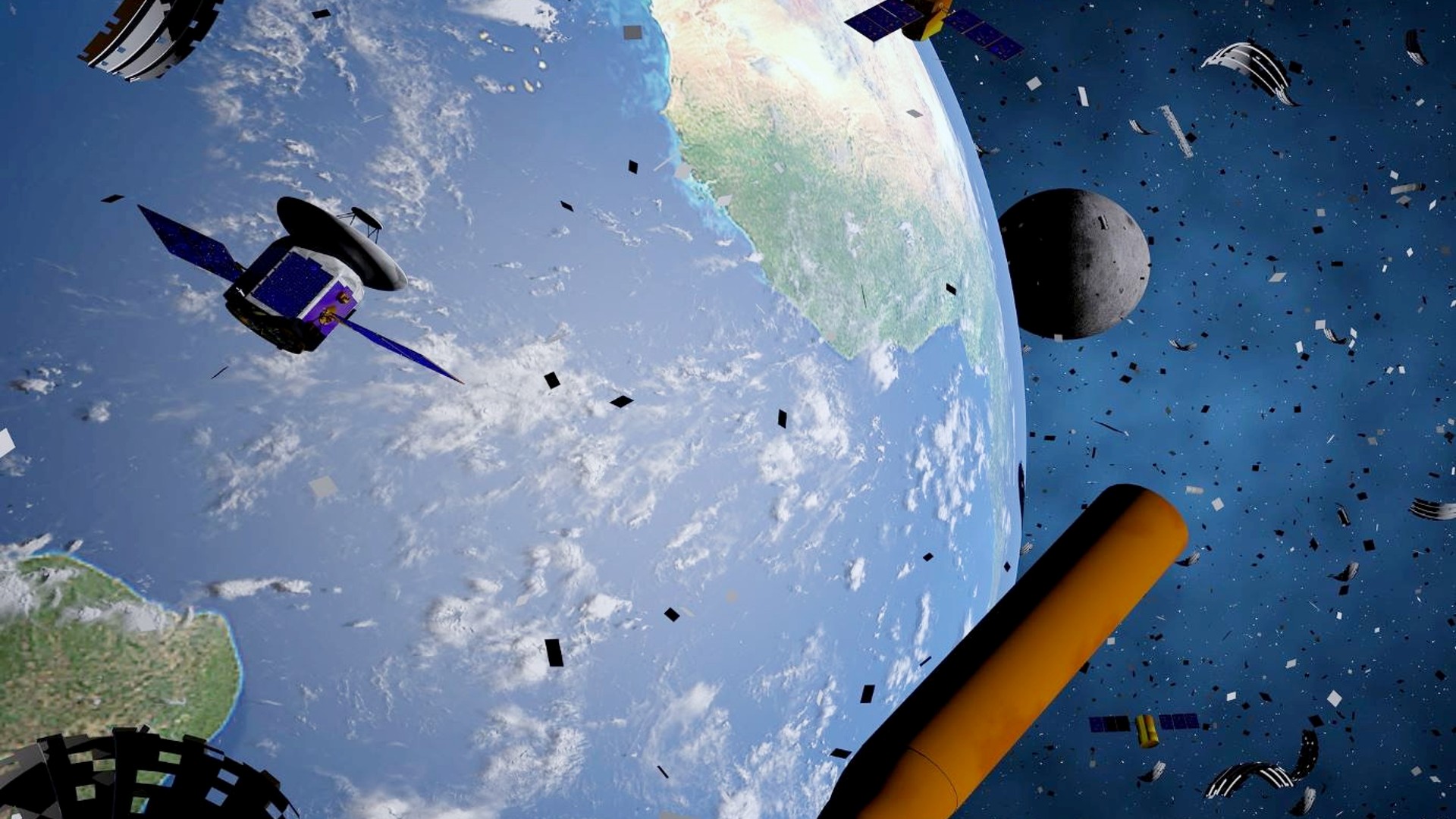Huge Hurricane Florence Looms Large in New Views from Space (Video)
As Hurricane Florence intensified into a major, Category 4 storm in the Atlantic Ocean today (Sept. 10), astronauts and satellites have spotted the enormous weather system from space.
NASA astronaut Ricky Arnold shared views from the International Space Station, which orbits around 250 miles (400 kilometers) above the Earth. "A few moments later, #Isaac & the outer bands of #Helene were also visible," Arnold tweeted, referring to two other hurricanes swirling to the east of Hurricane Florence. Last Thursday (Sept. 6), Arnold shared his first photos of Hurricane Florence, taken when it was still a Category 2 storm.
While Arnold and his fellow Expedition 56 crewmembers have been keeping an eye on Hurricane Florence and other Atlantic storms, the National Oceanic and Atmospheric Administration (NOAA) has been monitoring the weather systems with its Geostationary Operational Environmental Satellite (GOES) series. [Hurricane Season 2018: How Long It Lasts and What to Expect]
This morning, NOAA tweeted a video from the GOES-East weather satellite, also known as GOES-16, showing the storm's eye churning through the Atlantic. At the time, Florence was a Category 3 hurricane on the Saffir-Simpson scale (which classifies hurricanes by strength on a scale of 1 to 5). At around 12 p.m. EDT (1600 GMT), the National Hurricane Center (NHC) announced that Hurricane Florence had strengthened to a Category 4 storm.
According to the NHC advisory, Hurricane Florence is now located 575 miles (925 km) south-southeast of Bermuda and 1,230 miles (1,985 km) east-southeast of Cape Fear, North Carolina. Packing heavy winds with a maximum sustained wind speed of 130 mph (195 km/h), the hurricane is slowly barreling toward the U.S. East Coast, at a speed of approximately 13 mph (20 km/h).
"Further strengthening is anticipated, and Florence is expected to be an extremely dangerous major hurricane through Thursday," NHC officials warned in another advisory. Hurricane Florence is expected to make landfall on Thursday and will most heavily impact the coastal states of South Carolina, North Carolina and Virginia.
Florence is the third hurricane of the 2018 Atlantic hurricane season, after Hurricane Chris (Category 1) and Hurricane Beryl (Category 2), which formed in early July but didn't make landfall.
Breaking space news, the latest updates on rocket launches, skywatching events and more!
Forecasters are also tracking two more hurricanes that have formed to the east of Florence: Hurricane Helene, which strengthened to a Category 2 storm off the west coast of Africa today, and Hurricane Isaac, a Category 1 storm currently located roughly halfway between Florence and Helene.
You can find updates and public advisories related to Hurricane Florence and other hurricanes this season from the National Hurricane Center by visiting nhc.noaa.gov.
Email Hanneke Weitering at hweitering@space.com or follow her @hannekescience. Follow us @Spacedotcom, Facebook and Google+. Original article on Space.com.

Hanneke Weitering is a multimedia journalist in the Pacific Northwest reporting on the future of aviation at FutureFlight.aero and Aviation International News and was previously the Editor for Spaceflight and Astronomy news here at Space.com. As an editor with over 10 years of experience in science journalism she has previously written for Scholastic Classroom Magazines, MedPage Today and The Joint Institute for Computational Sciences at Oak Ridge National Laboratory. After studying physics at the University of Tennessee in her hometown of Knoxville, she earned her graduate degree in Science, Health and Environmental Reporting (SHERP) from New York University. Hanneke joined the Space.com team in 2016 as a staff writer and producer, covering topics including spaceflight and astronomy. She currently lives in Seattle, home of the Space Needle, with her cat and two snakes. In her spare time, Hanneke enjoys exploring the Rocky Mountains, basking in nature and looking for dark skies to gaze at the cosmos.

